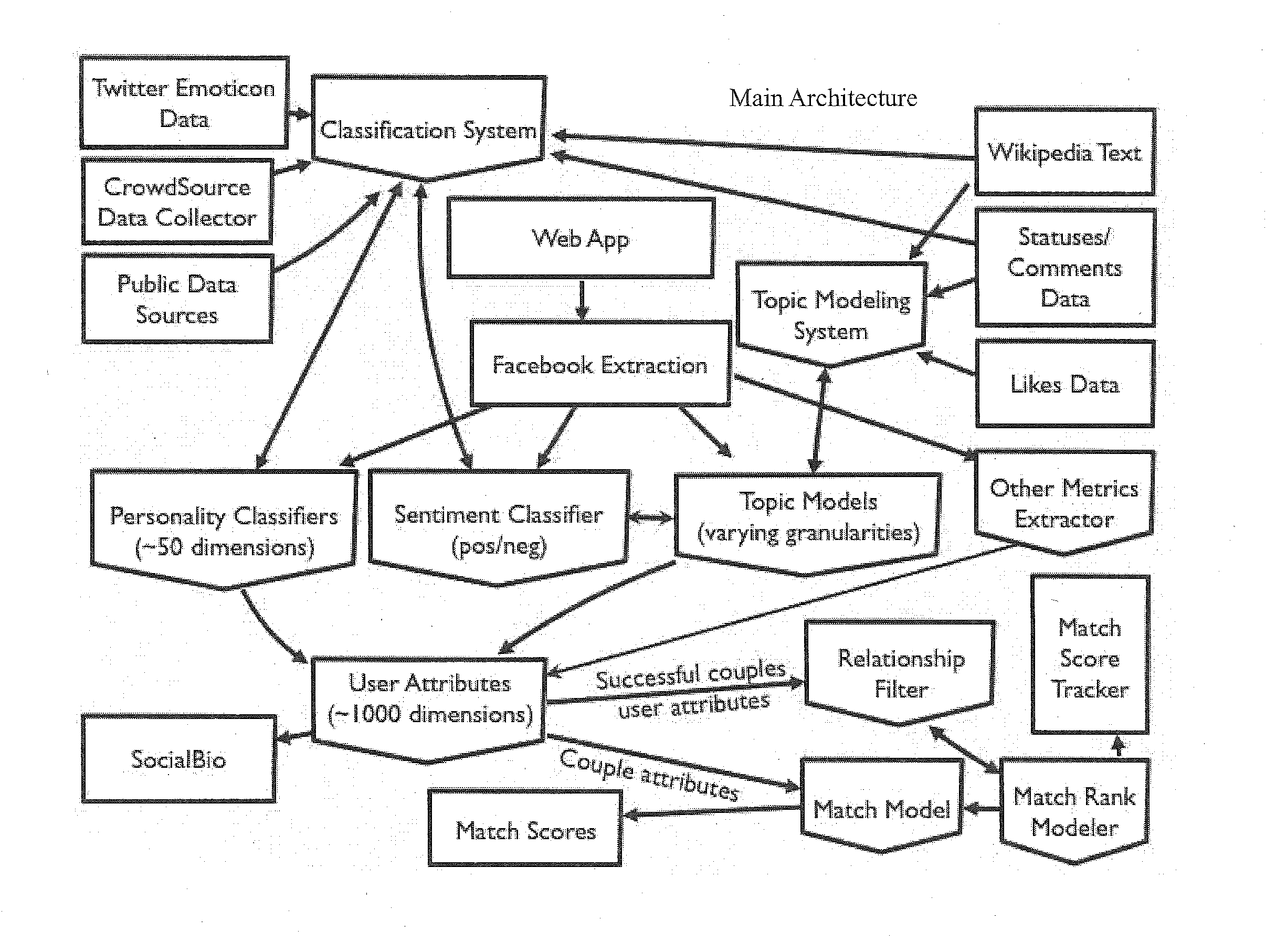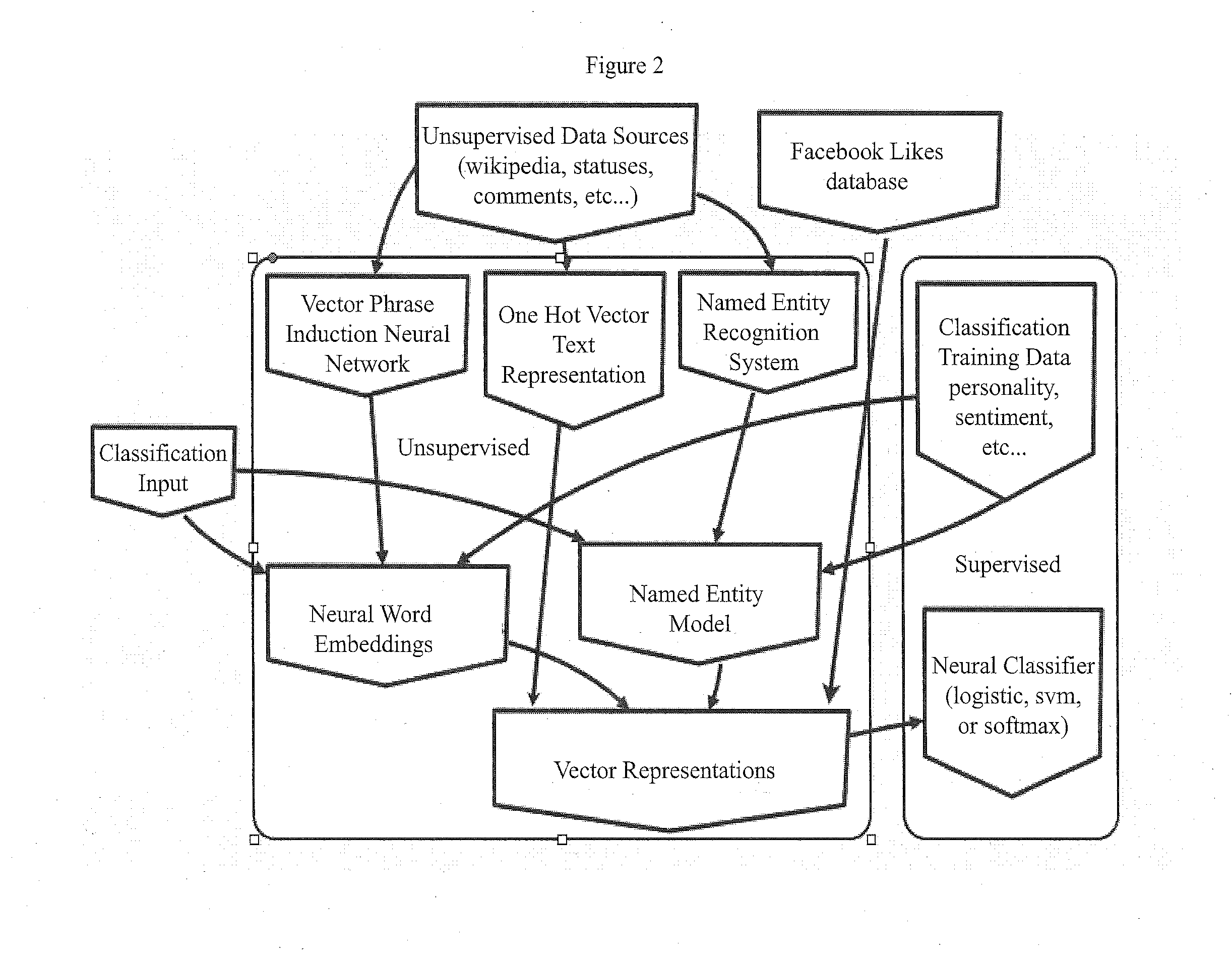System and method for combining data for identifying compatibility
a technology of compatibility and data, applied in the field of system and method for calculating relationship compatibility scores, can solve the problems of not being as accurate as intended, subject to intentional or unintentional, and prone to inconsistency,
- Summary
- Abstract
- Description
- Claims
- Application Information
AI Technical Summary
Benefits of technology
Problems solved by technology
Method used
Image
Examples
example 1
Online Dating
[0068]Successful romantic relationships are challenging for many individuals to find. Successful pairs have a mixture of shared interests / attributes, complimentary interests / attributes, and divergent interests / attributes. Finding the correct match between individuals helps ensure long term relationship success and avoid emotionally and financially draining dissolution of the relationship.
[0069]Traditional methods of finding a romantic partner are fairly random and sometimes are initially driven by factors which can be contradictory to a long term relationship. Alternate approaches for dating using questionnaires attempt to alleviate some of the matching problems but don't correctly adapt to feedback biases. It is worth noting that the majority of questionnaire based approaches utilize self-reported data, whereas the described approach of looking at social data avoids built in observer bias.
[0070]By combining structured data (user surveys), semi-structured data (social g...
example 2
Team Building
[0072]Effective teams have a variety of attributes including a set of skills that must be possessed by one or more members of the team as well as the ability to work cooperatively and communicate effectively, particularly in times of high stress.
[0073]Building effective teams using traditional methods that rely on resumes created by team members, manual questionnaires that introduce user bias and relying on human interviewers subject to their own skill / knowledge gaps and observer bias is both subjective and prone to error.
[0074]By combining structured data (user surveys), semi-structured data (social graphs and data) and unstructured data (team member resumes and other publicly available data), the system could analyze and report on personality match fit (extrovert / introvert compatibility, emotional stability, educational / intelligence levels, etc.) as well as skill set gaps and overlaps.
[0075]It is important to recognize that team choices are evaluated by the set of mem...
example 3
Hiring
[0077]Matching potential employees to jobs is a task that employers spend large sums of money on due to the organizational cost of hiring the wrong person for the job. In most ways similar to team building but with a different set of matching criteria. Specifically, with job matching the job applicant is searching for a matching open job position. Finding the proper match traditionally involves searching multiple job posting sources and applying to a position by providing only limited information to the potential employee in the form of a cover letter and resume. These must then be read by someone in a human resources department who may not know the actual matching criteria.
[0078]By combining structured data (job application), semi-structured data (social graphs and data) and unstructured data (resume, job description, etc.), the system could analyze and identify matching job postings for an individual's skills and experience. In addition, with the application of social graph...
PUM
 Login to View More
Login to View More Abstract
Description
Claims
Application Information
 Login to View More
Login to View More - R&D
- Intellectual Property
- Life Sciences
- Materials
- Tech Scout
- Unparalleled Data Quality
- Higher Quality Content
- 60% Fewer Hallucinations
Browse by: Latest US Patents, China's latest patents, Technical Efficacy Thesaurus, Application Domain, Technology Topic, Popular Technical Reports.
© 2025 PatSnap. All rights reserved.Legal|Privacy policy|Modern Slavery Act Transparency Statement|Sitemap|About US| Contact US: help@patsnap.com



